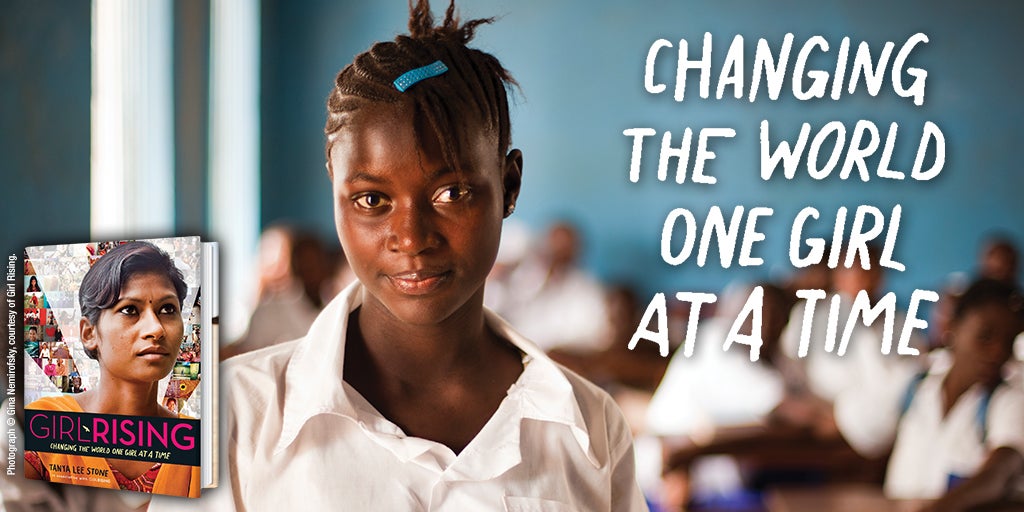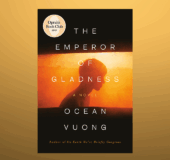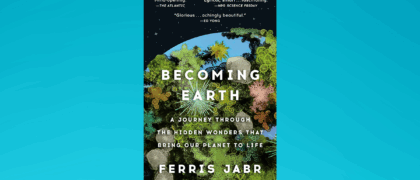Girl Rising, a global campaign for girls’ education, created a film that chronicled the stories of nine girls in the developing world, allowing viewers to witness how education can break the cycle of poverty.
Now, award-winning author Tanya Lee Stone deftly uses new research to illuminate the dramatic facts behind the film in a book focusing on the girls captured on camera as well as many others. She examines in depth many of the barriers to education—among them, early child marriage and childbearing, slavery, sexual trafficking, gender discrimination, and poverty—and shows how removing these barriers means not only a better life for girls, but also safer, healthier, and more prosperous communities.
With full-color photos from the film, infographics, and a compelling narrative, Girl Rising will inspire readers of all ages to join together in a growing movement to help change the world. Here are some ideas for school- or community-wide reading projects and activities prepared by Dr. Amita N. Vyas, PhD, associate professor at the George Washington University, and Eme Udoh, a former high school educator and graduate student at the George Washington University.
- Share the stories of the girls in Girl Rising at community events. You can share the stories by reading them, screening the film, or in any other way you can think of.
- Work with other students in your school or community to organize an art show based on the stories in Girl Rising. Charge admission and donate the funds to the Girl Rising Fund.
- Individually or in teams, create short videos that highlight the factors at stake when gender inequality exists. Have your class (or school) vote to select the best video.
- Work with your classmates to establish a writing contest at your school; students can submit fiction or nonfiction pieces about gender inequality and/or girls’ education. Ask businesses in your community to sponsor the contest by donating prizes. You could also ask for money and supplies to be donated to an organization that works to reduce the issues presented in Girl Rising in lieu of prizes.
- Build a community resource (website, newsletter, etc.) that shares information about local and global gender inequality and share it at your school and beyond. Include information about companies that equitably sell Fair Trade products.
- Collaborate with your classmates to write your own narratives about overcoming obstacles, and collect more stories from your community. Share the stories by organizing presentations for students at your school and other schools.
- Find out whether the city in which you live has any sister cities in countries described in this book. If not, write a proposal to your local government to encourage establishing such relationships. Organize fund-raisers to help support your sister city/cities.
- Individually or in teams, create a short video or other visual media presentation to raise awareness about the issues girls face around the world. Share your project on social media.
- Research aid groups and nonprofi t organizations that need help. Arrange community volunteer days to help those organizations.
- Organize an event designed to encourage boys and men in your community to become more active advocates for gender equality and girls’ education.
- Start a school club or lecture series. Invite guests from girls’ or women’s groups, or Skype with a representative from the Girl Rising NGO partners.
- Plan a community event to celebrate International Women’s Day on March 8 and International Day of the Girl Child on October 11.
Cick here for an Educators’ Guide that includes Internet Resources for further reading.





